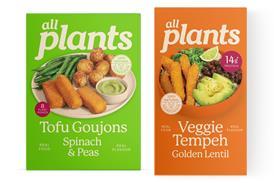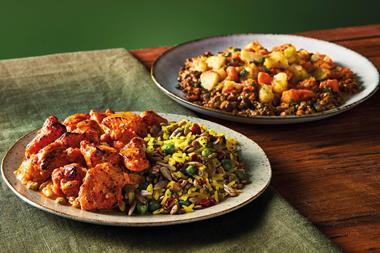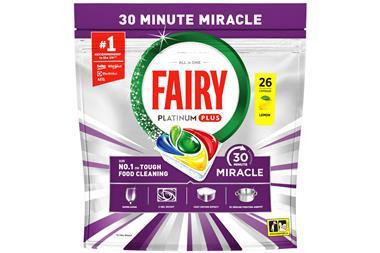A new "common sense" approach to the obesity debate is being put forward by the IGD, backed by the industry and health experts alike.
An IGD working group, chaired by Marks & Spencer and comprising Tesco, Kellogg's, United Biscuits, PepsiCo, Arla Foods and diet experts from the British Nutrition Foundation and the British Dietetic Association, has come up with a series of voluntary guidelines for communicating portion sizes to consumers.
The key proposal is that all packaged retail products should provide nutrition information for the portion size and not just per 100g.
An exception may be made for particularly small labels, but the aim is to clear the confusion for consumers who are currently provided with a variety of information, which can be based on 100g or the pack size itself or something else entirely.
The group also suggests that portion information should be based on the intended serving.
The report cites cauliflower cheese as an example: if it is marketed as a vegetable accompaniment to serve two, the nutrition information should indicate "half a pack"; but if sold as a meal for one it should use information based on "each pack", it recommends.
The report does not provide a scientific method for determining portion size or state what the portion size for food and drink products should be. It makes it clear the guidelines should be compatible with the outcomes of developments in the labelling legislation currently going through Europe.
On top of recommendations for retailers and suppliers, the report also suggests a number of steps government and the FSA should take.
These include developing a user-friendly portion-size tool, similar to that developed by Wrap for its Love Food Hate Waste campaign, and the development of a set of picture cards showing portion sizes of common foods, to be used at point of sale and by individual consumers.
"The reality is that customers don't want portion information to be prescribed, but see it as a helpful guide when cooking and buying food," said Marks & Spencer company nutritionist Claire Hughes. "The IGD guidelines are designed around what works best for the customer this is invaluable for industry."
Kellogg's communications director Chris Wermann hailed the report as a "common sense" approach to the obesity debate. He said the onus was now on suppliers and retailers to start rolling out this information as soon as possible.
An IGD spokesman added it was still too early to say what steps the industry would take to implement the guidelines but they had been well received.
Read more
Editor's Comment: Upping the calorie count will turn reds to amber and ambers to green (14 November 2009)
Calorie count guide wrong for 18 years (14 November 2009)
Obesity epidemic levelling off – study (3 November 2009)
An IGD working group, chaired by Marks & Spencer and comprising Tesco, Kellogg's, United Biscuits, PepsiCo, Arla Foods and diet experts from the British Nutrition Foundation and the British Dietetic Association, has come up with a series of voluntary guidelines for communicating portion sizes to consumers.
The key proposal is that all packaged retail products should provide nutrition information for the portion size and not just per 100g.
An exception may be made for particularly small labels, but the aim is to clear the confusion for consumers who are currently provided with a variety of information, which can be based on 100g or the pack size itself or something else entirely.
The group also suggests that portion information should be based on the intended serving.
The report cites cauliflower cheese as an example: if it is marketed as a vegetable accompaniment to serve two, the nutrition information should indicate "half a pack"; but if sold as a meal for one it should use information based on "each pack", it recommends.
The report does not provide a scientific method for determining portion size or state what the portion size for food and drink products should be. It makes it clear the guidelines should be compatible with the outcomes of developments in the labelling legislation currently going through Europe.
On top of recommendations for retailers and suppliers, the report also suggests a number of steps government and the FSA should take.
These include developing a user-friendly portion-size tool, similar to that developed by Wrap for its Love Food Hate Waste campaign, and the development of a set of picture cards showing portion sizes of common foods, to be used at point of sale and by individual consumers.
"The reality is that customers don't want portion information to be prescribed, but see it as a helpful guide when cooking and buying food," said Marks & Spencer company nutritionist Claire Hughes. "The IGD guidelines are designed around what works best for the customer this is invaluable for industry."
Kellogg's communications director Chris Wermann hailed the report as a "common sense" approach to the obesity debate. He said the onus was now on suppliers and retailers to start rolling out this information as soon as possible.
An IGD spokesman added it was still too early to say what steps the industry would take to implement the guidelines but they had been well received.
Read more
Editor's Comment: Upping the calorie count will turn reds to amber and ambers to green (14 November 2009)
Calorie count guide wrong for 18 years (14 November 2009)
Obesity epidemic levelling off – study (3 November 2009)

















No comments yet